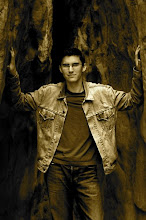I just finished watching two musical comedies with Fred Astaire and Ginger Rogers – The Gay Divorcee and Top Hat. As far as plots go, these two movies were so similar they’ve already begun to blur together in my mind.

In both films, Fred Astaire is the dapper, smooth-talking song-and-dance man who pursues Ginger Rogers, the lovely, affluent young woman who, due to some unfortunate misunderstanding about his moral character, utterly despises him. Of course, at the end she’s won over by his sizable charm (and dancing ability). Along the way, there are ridiculous yet thoroughly predictable plot twists, unbelievable coincidences, gaping plot holes, jokes that fell flat sixty years ago, sly Production Code-era innuendos, incessant singing, and copious amounts of dancing.

I love Fred Astaire and Ginger Rogers, but I’ve certainly seen them in better movies, both together and individually (Fred Astaire's Bandwagon, which I just rewatched, is one of my favorite musicals). Both The Gay Divorcee and Top Hat seem so trite and superannuated it would be easy for me to write them off as hopelessly dated were it not for one thing – the incredible choreography and chemistry between Astaire and Rogers. As dated as these movies may be, there is something timeless and magical about watching Fred Astaire and Ginger Rogers dance together. I could go on writing, trying to explain what that something is, but I think Roger Ebert says it very well:
“Because we are human, because we are bound by gravity and the limitations of our bodies, because we live in a world where the news is often bad and the prospects disturbing, there is a need for another world somewhere, a world where Fred Astaire and Ginger Rogers live. Where everyone is a millionaire and hotel suites are the size of ballrooms and everything is creased, combed, brushed, shined, polished, powdered and expensive. Where you seem to find the happiness you seek, when you're out together dancing cheek to cheek. It doesn't even matter if you really find it, as long as you seem to find it, because appearances are everything in this world, and ...
Let the rain pitter patter
But it really doesn't matter
If the skies are gray.
Long as I can be with you,
It's a lovely day."
"Night and Day" from Top Hat
Ultimately, I suppose every work of art is torn between realism and fantasy, between a "documentarian" impulse to depict the world as it really is and an "entertainment" impulse to depict the world the way we want it to be. This seems especially true where movies are concerned, because the visual is the immediate and the immediate carries the power so many things.
Vertov's great experiment in utopian cinema: Man With A Movie Camera (1929)
When cinema was first invented, it was perceived as nothing more than a carnival amusement, a mere curiosity. However, as cinema began to develop, early filmmakers became intoxicated with the potential power of the medium. Some utopian visionaries imagined that cinema would eventually unite the world through the universal power of the image, which they believed needed no translation. In film, they thought, we can show the world the way it really is.
Spielberg's Hollywood-ized Holocaust: Schindler's List (1993)
However, over time, the grand rhetoric of the documentarians proved empty because the documentarian impulse itself was actually just another desire masquerading as something higher. Over the last century, we've seen many great "true life" and "true-to-life" stories in cinema. Movies like Schindler's List and To Kill a Mockingbird have helped raise awareness about important social issues. But ultimately, film - just like every other artistic medium -is incapable of containing the real world. So no matter how movies present themselves ("The incredible true story," "Only the most incredible parts of this story are true," "Based on a true story"), I believe the essence of cinema is always desire, the desire to witness and experience - if only for an hour or two - beautiful little worlds, worlds like The Gay Divorcee and Top Hat where the boy always gets the girl, people burst into song for no other reason than because it makes them happy, and Fred and Ginger can dance together until the credits roll.
Swing Time (1936)






